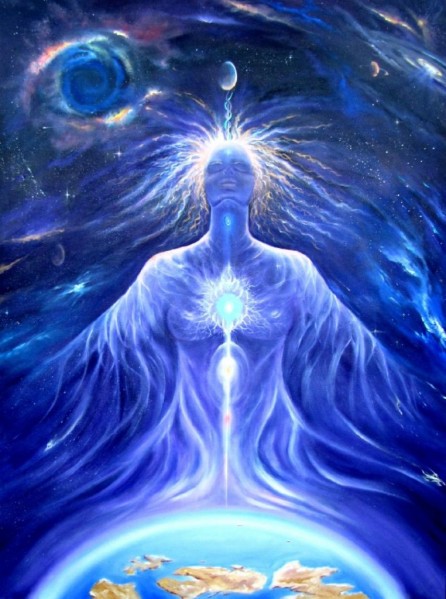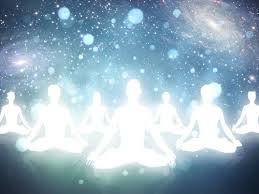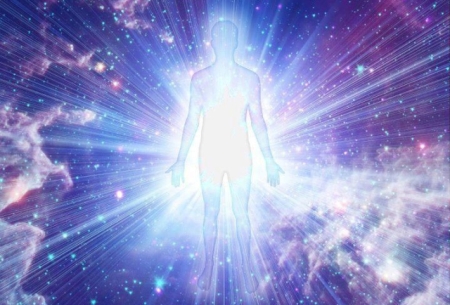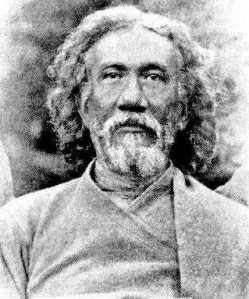
CREDIT: whitewolfjourneys.com
The journey of this blog, has taken us through varied interpretations of the Soul from the Hindu Eastern ‘Atma’ to the Western and Middle Eastern Judaic versions and again to the modern fusion achieved in ‘New Age’ insights. Personally what sticks with me is the Hindu concept of Soul and Reincarnation, garnished with the New Age concept of ‘Choice in Reincarnation’. The idea of Choice appealed greatly to me and I allowed it to help me reinterpret my Hindu beliefs. The theory of Karma and its consequences in reincarnations were logical and ancient and initially satisfying – yet it appeared to have one drawback – on the one hand it was too mechanical ( in the Gita Krishna underlines that the Lord – i.e. God – does not produce fruitful results of action – Nature does this through the law of Karma ) the law therefore appears to be unfeeling and automatic like gravity, just too mechanical (like blind justice). It also imposes judgement in observing suffering around us – a beggar, invalid, deformed, bereaved or otherwise suffering individual we encounter must have ‘earned’ his sorry state from previous misdeeds – this produces a judgmental reaction in the observer even when laced with compassion and condemns the unfortunate sufferer as suffering the consequence of his actions – ‘as you sow so shall you reap’ / ‘every action has an equal and opposite reaction’ – and so on. The introduction of the concept of CHOICE OF REINCARNATION by New Age thinkers has changed this entirely giving Karma a totally new interpretation. All these old and new elements have gone into the present post in personally, restructuring the concepts of Reincarnation and Karma experienced by the Soul. The first post explains my new understanding and the second which follows, presents it as a one-act play which I composed to help comprehend and dramatically visualize the points made. The first is therefore an Exposition of the One-Act-Play that follows it . This reinterpretation is quite radical and may not appeal to many who may be appalled by the thought that their present plight ( if unfortunate) arises from their own choice. Some people would prefer to accept the idea that ones unfortunate condition may be the result of a Karmik fate rather than one resulting from ones own conscious choice. In both cases what it boils down to is that we are responsible for our present situation.
A VALIANT CHOICE ( A Play )
PART I – EXPOSITION
(An imaginary Soul preparing to reincarnate)
It was very difficult to make the right choice. Nothing could be gained from pleasurable plentiful easy options alone. The handicaps, obstacles, trials were the more important choices, the fundamental experiences to improve the quality of ones being. There was complete freedom to make the right combination of choices or to make no choices at all. There never was any compulsion here, no peer pressure, no fear, no punishment.
There was no hunger as existence was not reliant on consumption but was self-sufficient. the only hunger was for experience on the physical plane.
There was no fear of mortality. the only concern was for one’s further evolution.
There was no procreative sexuality as survival of one’s kind did not depend on reproduction – though there were attractions and appreciation of others and great affairs of love extending over eons were quite common place.
Fear did not exist. Motivation arose from creativity and a sense of duty and dedication.
Anger in grosser states was here a kind of unbending determination.
It would be meaningless to lie when the truth was known to all and no thoughts could be secret and there was no room for deception.
There was nothing to steal as possessions were beyond your reality.
Nobody could be hurt so the question of inflicting injury never arose.
There was no judgement because you were your own harsh judge, jury and executioner.
Your primal essence glowed with clarity in an ambiance of bliss and perfection. Of course, there were higher levels and there were peers but you were left to evolve at your own pace.
There was complete harmony, equilibrium and freedom. No disturbance of any kind, nothing painful, nothing enforced in that timeless essence.
Then from the heart of this equilibrium arose a whim, inventing opposites as a means of comprehending equilibrium, the postulate of two notes making a harmony, the promise of a finite time to measure infinity, the concept of mortality to define immortality better, the idea of material diversity arising from essential unity. The hallmark of material creation was mortality, a finite, diverse world under the sway of the law of opposites – . good, bad, light and shadow, water and fire, pleasure and pain, male and female.
To comprehend one’s own reality, it was desirable to materialize and experience mortality, to be in the full glare of the law of opposites. So the choice was yours – first whether you wished to materialize and then the nature of your materialization. To materialize meant to become embodied.
The choices were unlimited and came to you in your contemplation and discussions with companions and peers. Pain and suffering were the constant accompaniment to mortality, where the experience you wished to undergo was entirely of your own choosing. Was it to be one in which towering ego had to be overcome; obsessive attachments shown to be illusory; an acquisitive nature’s ultimate realization that possessions were meaningless; restraint and control to be learnt in a life driven by lust; addictions to be remedied; language of exchange and service to be perfected; the lessons of want to be learnt in poverty; compassion to be perfected in a life of suffering through disease; frugality, temperance and charity to be learnt through a life of billionaire abundance; the appreciation of perfection learnt in a lifetime of deformity or hardship; anger to be sublimated in a lifetime of raging insanity; innumerable relationships and interaction between two personalities worked out in different situations and combinations.
It was not as if soul forces were riven with imperfections needing remedy. Soul forces were the essence of perfection and equilibrium but the need to evolve necessitated the experience of mortality, the trials and tribulations of a material existence. The choice of category of experience and level and quality of existence was its own, like one’s choice of a book from a library.
The planning for a re-entry into Earth-World was intricate and thorough. The combinations which would sustain a life span without allowing the incarnation to founder from excessive trials while facilitating the desired experience, had to be carefully worked out. The negative elements needed to be balanced with positive ones. Strengths were available to all in many forms ( as weapons of defence to be selected carefully) in such a way as to ensure that the desired experiment was not nullified. Much like weapons of defence available to a Roman Gladiator. Weapons such as beauty, riches, nobility, generosity, special skills and talents, genius and creativity, spouse’s love, parental love, love from progeny, people’s love or acclaim and admiration, animal loyalty, successful career, great achievements, winning nature, power and prestige, to name a few. Handicaps and obstacles were also aplenty, to be judiciously combined like heavy weights with a sound diet. The choice of most trying circumstances could include abject poverty and hunger, shame humiliation and infamy, disease deformity and physical ugliness; orphanage and loneliness; persecution and victimization; guilt and ignominy of heinous crimes; insanity derangement and depression; insatiable greed, lust and addictions; ignorance and illiteracy; dogmatism and fanaticism; consuming hate and a life time of revenge; faithlessness and cynicism; over bearing ego and compulsive need for domination; cruelty, wastefulness and destructiveness etc.
The heaviest crosses could well be borne by the worthiest souls, having chosen to carry them – not unlike the choice of the most difficult course for graduation. Better or easier circumstances therefore did not translate into presumption of superiority of the embodying soul.
Sometimes companions would incarnate together, while other companions would assist in the difficult planning and materialization process, overseeing the incarnation as Guides and Guardian souls. Peers and even Masters were available for consultation. Some companion Guides would then attach themselves as boatmen to steer the adventurer soul on its courageous journey across the ocean of matter, to ensure that the journey of life played itself out and did not come to an abrupt and ignoble end nor was the incarnated personality so discouraged as to quit midway. The Guides provided succor, assistance and relief from extremely untenable and unpredictable situations, while the general tenor of a chosen life story unfolded along its determined course to provide material experience and help in evolution and understanding the material aspect of the spirit. Guides had a difficult job being present as it were between two worlds simultaneously. Masters came with great transforming messages and experienced the suffering inherent in mortal existence.
Preparation for departing souls was always full of compassionate congregation and support before its descent into the grossest elements and there was constant concern to see that its courage was rewarded by a successful and complete sojourn of the chosen life-span. Souls also undertook to incarnate together as relatives, spouses, friends, enemies and numerous other relationships to help in working out an issue of common interest on the material plane – the themes were varied – love, betrayal, exploitation, sacrifice, revenge, addictions, superiority or inferiority complex, majority or minority community, differences of race, colour, caste, sex, creed etc. Often familial relationships and circle of friends and acquaintances were the same group of participants in succeeding reincarnations being switched or shuffled about. The soul assuming the role of father might seek to experience a switch with the soul playing the role of son in the next incarnation. Friends might opt to play the enemy in the next. Masters became servants, wives husbands or an intimate relationship in one might become nothing more than an acquaintance in the next.
It is for this reason that it was ‘unethical’ during an earth life to be judgemental. Compassion became important for the same reason. This of course did not mean that the development of negativities in a life being played out was unreal or to be condoned or that sufferings were not real enough or that punishments imposed during earth life were undeserved or that crimes were not real. Each life’s circumstances contained certain compulsions and the results were not always predictable.
The physical incarnation necessarily was made oblivious of its spiritual lineage and purpose and identified totally with its physical persona acting and reacting to its environment with the totality of its physical aptitudes and shortcomings. The thick earth medium of senses and their objects quickly grasped the incarnate spirit in the flux of temporal life, thrusting forward from one challenge to another without respite, much like a the breath-taking ride on a roller-coaster. The spirit generally emerged at the end strengthened and more luminescent.
The incarnating soul force in the company of interested companions was at all times also able to observe its incarnate self-acting and reacting to the given circumstances much like one would a video of oneself and capable of beaming in some influences or corrections to improve the experiment, but the incarnation was no puppetry and could produce unpredictable results both appalling and exhilarating . The spirit was often amazed by the behaviour of its incarnation. There was always the risk that a dismal outcome of an incarnation gone wrong might affect the resonance of the incarnating soul, diminishing the level of its clarity. Equally a successful engagement with physical trials would enhance that clarity with accompanying evolution to a higher order of Spirit. Eventually all souls felt encouraged to take the risk of material reincarnation for evolution to a higher level of being, rather than stagnating blissfully at their own level.

Credit: blog.richhealing.com
.



















